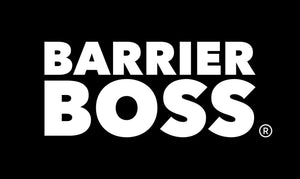What is the Lifespan of Corrugated Metal?
Corrugated metal has become a popular choice for construction projects, including corrugated metal fences and corrugated metal fence panels. Its appeal lies not only in its aesthetic qualities but also in its durability and versatility. Understanding the lifespan of corrugated metal is essential for anyone considering it for their next project. This article explores the factors that influence its longevity, maintenance practices, and the types of corrugated metal available.
Overview of Corrugated Metal

Corrugated metal is characterized by its wavy pattern, which enhances its structural integrity while minimizing weight. Common materials used include galvanized steel, aluminum, and, in some cases, copper. The corrugation adds strength and rigidity, making it ideal for a range of applications.
The most significant advantage of corrugated metal is its resilience against harsh weather conditions, pests, and physical damage. However, the lifespan of corrugated metal depends on some key factors.
Typical Lifespan
On average, corrugated metal can last between 20 to 50 years. Several variables influence this range:
- Material Quality: The type of metal used plays a crucial role. Galvanized steel, for instance, is coated with zinc to prevent rust, extending its lifespan significantly. Higher-quality aluminum is also resistant to corrosion and can last even longer than galvanized steel.
- Environmental Factors: Geographic location and environmental conditions are significant determinants. High humidity, saltwater exposure, or extreme weather conditions may promote faster degradation of even sturdy cyclone panels. For example, coastal regions may accelerate corrosion due to salt in the air.
- Installation Quality: Proper installation is vital for maximizing the lifespan of corrugated metal, especially for corrugated metal fences and fence panels. Poorly installed panels can lead to water infiltration, which may cause rust and damage over time. It’s essential to follow manufacturer guidelines and ensure a secure, watertight fit.
- Maintenance Practices: Regular maintenance can significantly extend the lifespan of metal corrugate. Inspections for rust, loose fasteners, and damage should be conducted periodically. Cleaning the surface to remove debris and preventing the buildup of moss or algae can also help maintain its integrity.
Types of Corrugated Metal

The lifespan can also depend on the specific type of corrugated metal used. Here’s a closer look at some common materials:
- Galvanized Steel: This is one of the most popular choices for corrugated metal fences due to its cost-effectiveness and durability. The zinc coating provides a barrier against moisture, which helps prevent rust. With proper maintenance, galvanized steel can last 20 to 30 years, and sometimes longer in less corrosive environments.
- Aluminum: While typically more expensive than galvanized steel, aluminum offers superior resistance to corrosion and can last up to 50 years or more. It’s an excellent choice for corrugated metal fences in coastal areas where saltwater exposure is a concern.
- Copper: Known for its aesthetic appeal, copper can last well over 50 years, often reaching 100 years or more. However, it requires a higher initial investment and develops a patina over time, which some may find desirable while others may not.
Factors Affecting Lifespan
Several factors can impact the lifespan of corrugated metal beyond material choice:
- Climate: In areas with extreme weather conditions—such as heavy snow, high winds, or intense sunlight—the lifespan may be shorter due to increased wear and tear. UV exposure can cause fading and deterioration of protective coatings.
- Installation Location: The angle and orientation of installation can also affect longevity. Panels that are horizontally installed may collect more debris and moisture, while those with a steep pitch allow for better drainage.
- Ventilation: Adequate ventilation in buildings can help reduce humidity levels, preventing corrosion and rust in metal structures. Proper airflow can extend the lifespan of corrugated metal significantly.
Maintenance Tips for Longevity
To ensure the longevity of corrugated metal, including corrugated metal fences and fence panels, consider the following maintenance practices:
- Regular Inspections: Conduct inspections at least twice a year. Look for rust spots, loose fasteners, and signs of water infiltration. Early detection of problems can prevent more significant issues down the line.
- Cleaning: Keep the surface clean from debris, moss, and algae. A gentle wash with water and a mild detergent can help maintain its appearance and prevent corrosion.
- Protective Coatings: Applying a protective coating can add an extra layer of defense against the elements. Many manufacturers offer products specifically designed for corrugated metal that can enhance durability.
- Addressing Damage Promptly: If you notice any damage, such as dents or rust, address it immediately. Patch up holes or rust spots to prevent further deterioration.
Conclusion
The lifespan of corrugated metal can be impressive, often lasting 20 to 50 years or more, depending on various factors. Choosing high-quality materials, ensuring proper installation, and conducting regular maintenance are key to maximizing its durability. Whether you opt for galvanized steel, aluminum, or copper for your corrugated metal fence or fence panels, understanding the specifics of each material will help you make an informed decision that meets your needs and preferences.
Utilizing this material not only enhances the aesthetic appeal of a structure but also provides a long-lasting, reliable solution for various construction needs. By taking the necessary steps to care for your corrugated metal installations, you can enjoy its benefits for decades to come.


